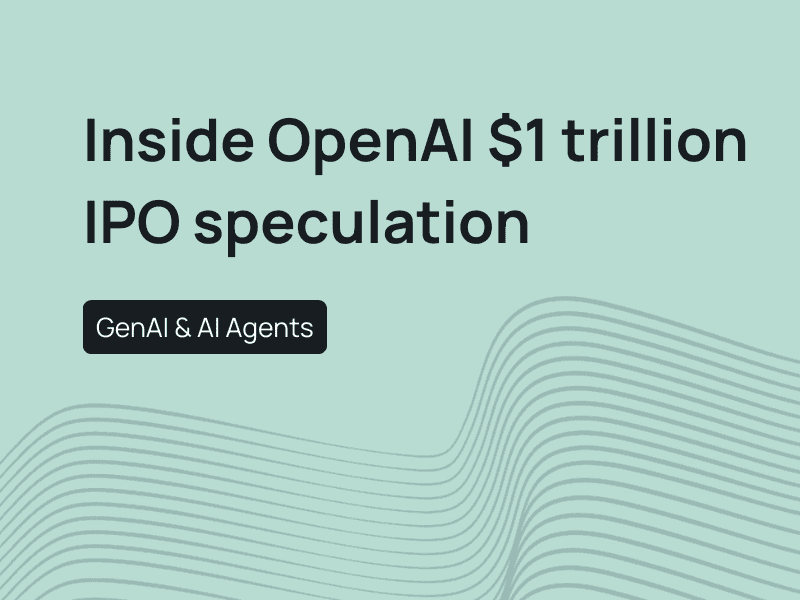Robotics is entering a new era as artificial intelligence meets advanced hardware. This combination is creating AI-native physical agents—robots that can see, understand, and adapt to their surroundings in real time. Unlike older machines limited to fixed tasks, these systems can handle unpredictable environments and learn new jobs quickly. They are already moving from factories and warehouses into logistics, healthcare, construction, and agriculture, unlocking new levels of efficiency and capability.
Companies leading in AI-native robotics often have valuable intellectual property, specialized hardware, and data advantages that make them highly defensible. As adoption accelerates, the sector offers attractive opportunities for growth funding, acquisitions, and building long-term value.
From traditional robotics to AI-native robotics
Traditional robotics relies on rigid, pre-programmed instructions, while AI-native robotics brings adaptability, learning, and decision-making into the core design. These systems are built to follow strict, rule-based commands in controlled settings—such as assembly lines—where every variable is known in advance. They excel at speed and precision but struggle when conditions change or tasks deviate from their programming.
AI-native robotics, by contrast, is designed from the ground up to integrate advanced AI models for perception, reasoning, and continuous adaptation. These systems can interpret complex environments, learn new tasks from data or demonstration, and adjust their actions in real time. This leap enables them to operate in unstructured, unpredictable settings, dramatically expanding their potential applications and market reach.
Investment is pouring into this space: global AI robotics funding topped $2.2 billion in Q1 2025 alone. The market is on course to surge from around $25 billion in 2025 to over $126 billion by 2030, growing at a swift 29% CAGR. Leading companies like Figure AI, Agility Robotics, and ApptronikSanctuary AI are turning cutting-edge tech into scalable, revenue-generating platforms, capturing investor attention with their proprietary AI, advanced hardware, and rich data assets.
Defining Physical Agents
Physical agents are intelligent, embodied systems that can sense, understand, and act within the physical world, powered by AI at their core. They bring together three essential components:
- Hardware platforms - These include mobility systems (such as wheeled, tracked, legged, or aerial platforms) and manipulation systems (robotic arms, precision grippers, or specialized tools) that enable them to move, navigate, and interact with objects.
- Multimodal sensor arrays - A combination of vision systems, LiDAR, radar, tactile sensors, microphones, and other inputs provide a rich understanding of the environment, allowing them to detect obstacles, interpret human gestures, and respond to changing conditions.
- Foundation models for reasoning and control - Advanced AI models process the sensor data, make context-aware decisions, and coordinate physical actions in real time. These models allow the agents to adapt to unfamiliar situations, learn from new experiences, and operate with increasing autonomy.
Industry applications and Disruption potential
AI-native physical agents are transforming industries by performing complex tasks that used to require humans or fixed automation. They work best in environments that are dynamic, unpredictable, or data-rich, making them a disruptive force across multiple sectors.
- Manufacturing & Warehousing - AI-native robots can adapt quickly to changes in products, workflows, or production schedules, handling materials of varying sizes, shapes, and fragility. They can operate safely alongside human workers, taking on repetitive or physically demanding tasks, which reduces errors and workplace injuries. By enabling flexible production lines and more efficient storage operations, these robots help companies respond faster to market demand, minimize downtime, and optimize overall operational efficiency.
- Logistics & Last-Mile Delivery - Autonomous delivery and warehouse robots can plan routes dynamically, adjusting in real time to traffic patterns, obstacles, or weather conditions. By automating both transport and sorting processes, these systems lower operational costs, increase speed, and improve customer satisfaction, while freeing human staff for higher-value tasks.
- Healthcare - AI-enabled surgical robots provide precision and stability beyond human capability, assisting surgeons in complex procedures. Rehabilitation devices adapt to individual patient progress, tailoring exercises and therapy in real time. Care robots can help elderly or mobility-impaired individuals with daily tasks such as lifting, medication reminders, or monitoring, reducing the workload on caregivers and improving patient safety and quality of life.
- Construction & Infrastructure - Physical agents can inspect buildings, bridges, pipelines, and other critical infrastructure safely and efficiently, identifying structural issues before they become major problems. They can also perform precision tasks like bricklaying, welding, or 3D printing in areas that are hazardous or difficult for human workers to access. This accelerates project timelines, enhances safety, and ensures consistent quality in complex construction environments.
- Agriculture - Field robots can monitor crops continuously, detecting early signs of pests, disease, or nutrient deficiencies. They can deliver targeted interventions, such as precise irrigation, fertilization, or pest control, reducing waste and environmental impact.
Market drivers
The growth of AI-native robotics is being driven by several key factors. Advances in AI allow robots to understand their environment, make decisions, and adapt to new tasks in real time. At the same time, sensors and edge computing are becoming cheaper and more powerful, making intelligent robots more accessible. Rising labor costs and shortages of skilled workers are encouraging companies to use robots for repetitive or dangerous tasks. Regulatory changes in sectors like healthcare, logistics, and construction are also making it easier to adopt automation safely and efficiently. Together, these trends are creating strong opportunities for rapid growth and investment in AI-powered physical agents.
Risks and considerations
Despite the strong potential of AI-native robotics, there are important risks to consider. On the technical side, moving from lab prototypes to reliable, real-world systems is challenging. Robots that work well in controlled environments can struggle in unpredictable settings, such as uneven terrain, crowded workplaces, or changing workflows. Ensuring they operate consistently and safely over time requires high-quality hardware, robust software, and AI that can handle unexpected situations.
Regulatory and ethical issues add another layer of complexity. Safety is critical—robots must meet strict standards to prevent accidents. Liability can be unclear when AI makes decisions instead of humans, raising legal questions. There are also societal concerns, including potential job displacement as robots take over certain roles. Companies need to work with regulators, policymakers, and communities to deploy robots responsibly, ensuring benefits are realized without negative impacts.
The bottom line
AI-native robotics present a unique combination of high-growth potential, operational impact, and technological differentiation. Companies that can scale reliable, safe, and adaptable solutions are well positioned to capture market share and unlock new revenue streams. In our view, the most attractive opportunities lie in platforms that integrate hardware, software, and AI to deliver sustainable advantages in dynamic markets. AI-native physical agents are set to become a cornerstone of technology-driven transformation and strategic investing for years to come.
Published by Samuel Hieber


